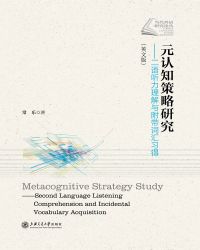3.9 Discussion
您可以在百度里搜索“元认知策略研究:二语听力理解与附带词汇习得(英文版) 艾草文学(www.321553.xyz)”查找最新章节!
3.9 Discussion
The pilot study was conducted with the main findings that Group A's problem solving awareness were statistically significantly correlated with reception test scores in both listening tasks. This showed that for the participants who listened to the text just once, the more aware of problem solving strategies they were, the better they did in incidental vocabulary acquisition in terms of the reception test. With these findings, the following points deserve discussion.
(a) Problem solving strategies were statistically significantly correlated with Group A only
That fact that problem solving awareness was significantly correlated with vocabulary gain scores only in Group A can be explained by the assumption that the differences in metacognitive awareness were negated when instructional treatment was provided in terms of listening three times or listening three times with a pre-listening activity. When students had authentic type listening (listening for only one time), the significant correlation between metacognitive awareness and listening comprehension occurred. Therefore, a conclusion can be drawn that metacognitive strategies were more important when learners were engaged in an authentic type listening task.
(b) Problem solving strategies were statistically significantly correlated with Group A's reception test only
In both listening tasks, problem solving awareness was statistically significantly correlated with the reception test scores. One possible conclusion can be drawn here is that listening texts only aided vocabulary gains in form and meaning, but not in production. This can be interpreted to mean that words learned through oral input were much easier to acquire knowledge of in the aspect of reception rather than production.
(c) Group A almost always achieved the most vocabulary gains per minute, but Group C reported the most gains in production
In terms of receptive knowledge, the authentic listening tasks seemed to be more efficient than tasks involving instructional intervention. Concerning production, simply exposing learners to words and text had no effect. Nevertheless, giving learners more listening repetitions and pre-listening activities did have an effect on vocabulary acquisition in production.
(d) Results in production in Task One and Task Two were different
It is interesting to see the difference in production between the two tasks. Why did the multiple comparison scores of the production tests fail to reach consistency in the two tasks while the scores on the form and reception tests did? One possible account is the different orientation of the participants in Group A, whose experience from Task One had helped them to realize that they would be tested on vocabulary again in Task Two. Thus, it was likely that when the second listening task came, the participants in this group would tend to prepare for the incidental vocabulary acquisition tests that would follow. In other words, students may have paid special attention to vocabulary while listening in Task Two. The descriptive statistics show that students scored better in almost all the vocabulary tests in Task Two than in Task One, which might be a result of the purposeful focus on vocabulary that students had. 元认知策略研究:二语听力理解与附带词汇习得(英文版)

